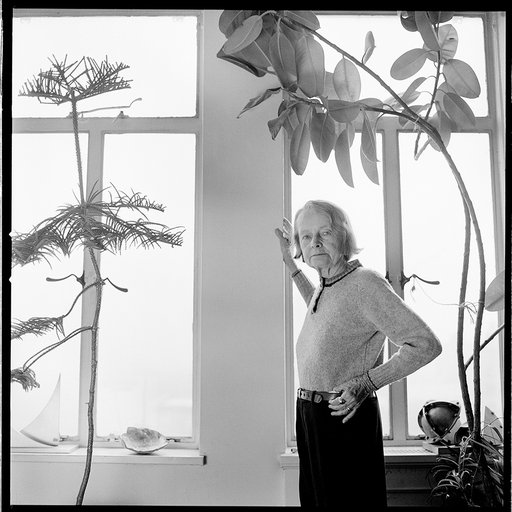Perle Fine
Abstract expressionist painter Perle Fine remained faithful, throughout a long and prolific career, to her own tenets of the non-objective movement. Active in the modern art scene from the 1930’s until the year of her passing in 1988, Fine's creativity explored and reworked several abstract styles and ideas, but always emphasized her ability to produce a certain harmony on canvas. Her work accentuated the beauty of rhythmic variations and the subtle nuances of color, line, shape and space.
During the 1940’s, Fine was actively showing her work at galleries and exhibitions in New York and abroad, and was associated with several arts organizations. By 1943, she was affiliated with Hilla Rebay and the Museum for Non-Objective Painting. She was also a Guggenheim scholar, exhibiting with artist as such as Ilya Bolotowsky and Ad Reinhardt. She was a member of the American Abstract Artists, the Society of American Etchers, the Federation of Modern Painters and Sculptors. She also studied with Stanley William Hayter at his Studio 17 and printmaking with Robert Blackburn. Her work was represented in many important venues including the Boston Institute of Modern Art, the Whitney Museum, the Guggenheim Museum, the De Young Museum in San Francisco, and …
Abstract expressionist painter Perle Fine remained faithful, throughout a long and prolific career, to her own tenets of the non-objective movement. Active in the modern art scene from the 1930’s until the year of her passing in 1988, Fine's creativity explored and reworked several abstract styles and ideas, but always emphasized her ability to produce a certain harmony on canvas. Her work accentuated the beauty of rhythmic variations and the subtle nuances of color, line, shape and space.
During the 1940’s, Fine was actively showing her work at galleries and exhibitions in New York and abroad, and was associated with several arts organizations. By 1943, she was affiliated with Hilla Rebay and the Museum for Non-Objective Painting. She was also a Guggenheim scholar, exhibiting with artist as such as Ilya Bolotowsky and Ad Reinhardt. She was a member of the American Abstract Artists, the Society of American Etchers, the Federation of Modern Painters and Sculptors. She also studied with Stanley William Hayter at his Studio 17 and printmaking with Robert Blackburn. Her work was represented in many important venues including the Boston Institute of Modern Art, the Whitney Museum, the Guggenheim Museum, the De Young Museum in San Francisco, and the Spring Salon for Young Artists at Peggy Guggenheim's Art of This Century. Fine's first solo show occurred in 1945 with Marian Willard, and between 1947-1949 was represented by Karl Nierendorf. After the Nierendorf Gallery closing she signed with Betty Parsons, one of the earliest and most prominent New York galleries associated with Abstract Expressionism.
The final creative segment of Perle Fine's life took shape during the mid-1960s. She became interested in the repetitive rhythm and geometry of the grid. Fine's Accordment series of paintings made use of an underlying linear structure over which bands of color were set in deliberate pattern. These bands of color—often times warm versus cool tones were positioned or juxtaposed in order to achieve the appearance of one pervasive and luminous hue. Working in both the small and large scale, Fine adopted a much lighter touch during this period, generating a translucent glow to these paintings. Her method of using a grid overlaid with pigment integrated the values of "equilibrium" and "balance"—terms that laid the foundation of her formalism inherited from Mondrian. Fine's emphasis to color and its wavering painterly application result in the Accordment paintings achieving just that; they strain to bring about a successful marriage of structure and lyricism.
In addition to her artwork, Fine taught at Hofstra University during the 1960s and was also a visiting critic and lecturer at Cornell University. In the 1974, she was awarded the Arts and Letters Award for Excellence by the American Academy of Arts and Letters. That same year she received an Artist Fellowship by the National Endowment for the Arts. Her final solo exhibition was held at Guild Hall in East Hampton in 1978, entitled Perle Fine: Major Works 1958-1978. Fine was an artist who focused on the doctrines of her movement, anxious to express on canvas her own firm belief in abstraction. It is a testament to her extraordinary passion and skill.
Courtesy of the Artist's Site
Brandeis University
The Brooklyn Museum
Cheekwood Museum of Art
Corcoran Gallery
University of California at Berkely Guild Hall, East Hampton, NY
Solomon R. Guggenheim Museum
Hofstra University Indiana
University Art Museum
MunsonWilliamsProctor Institute
The National Museum of American Art New York
University Art Collection University of North Carolina
Parrish Museum, Southhampton, NY
Rutgers University Smith College Museum of Art
Smithsonian Institute
Westinghouse Corporation
Whitney Museum of American Art
Weatherspoon Art Museum-The University of North Carolina at Greensboro
Principia College Addison Gallery of American Art
Provincetown Art Association Museum





